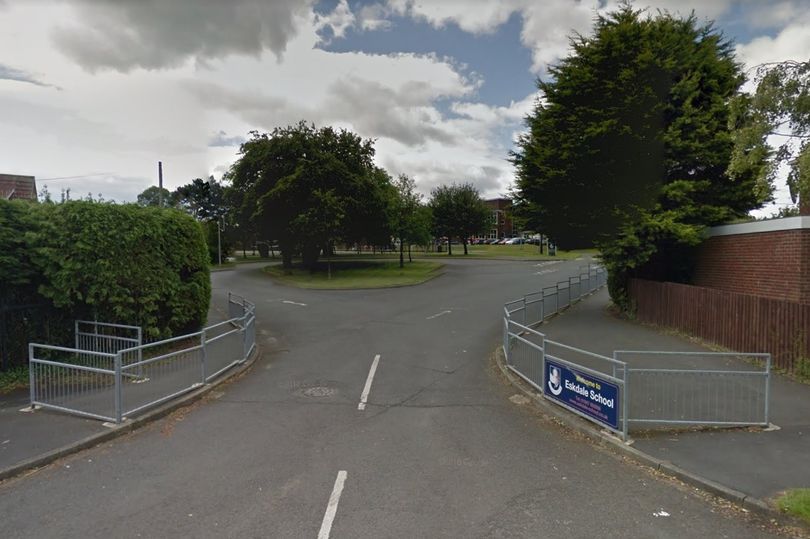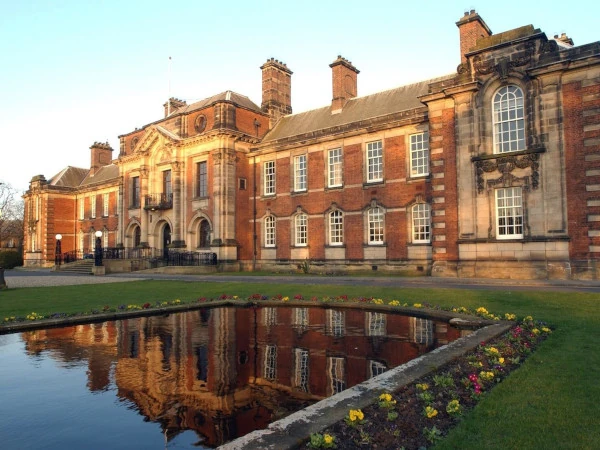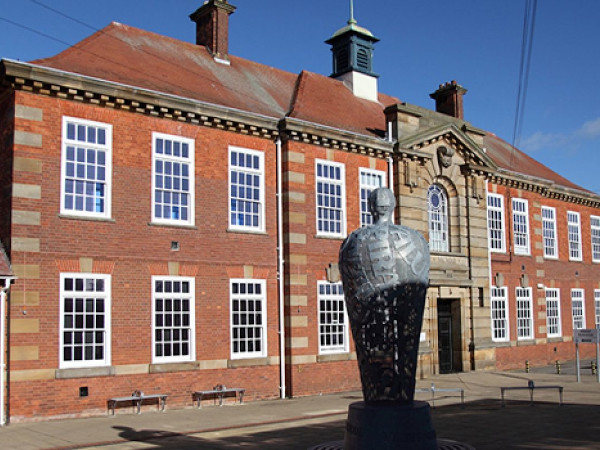Regarding the proposal to amalgamate Caedmon College Whitby and Eskdale School from 1 September 2024. This is an opinion piece by David Bradley, former Eskdale Headteacher. The views expressed are those of the author.
1. Introduction
The proposal to NYCC by four governors of the Whitby Secondary Partnership to amalgamate two schools is, in fact, a plan to reorganise secondary education in Whitby. In my view, it is not the collective view of a Governing Body and as such it has no more legal authority than the views of any four individuals. I understand that the ‘Federated Governing Body’ should consist of thirteen members. How can four governors be considered a quorum?
A reorganisation of this magnitude should have been a topic for consideration by all the students, parents/guardians, teachers, support staff and significant members of the local community before any proposal was presented to elected members. The proposal ‘came out of the blue’ on the first day of term in January 2023. Worse still, the original date for closure of Eskdale School was September 2023. What did this do to the confidence and morale of children, carers, and staff in our two schools? Thankfully, the time frame has been extended but the original proposal had none of the hallmarks of good, strategic planning. How did the parents of Year 6 students feel when they had just made their choice of secondary school?
The management of change is a complex issue and good practice dictates involving the gathering of opinions, consultation with a variety of interested groups and the consideration of several options by the community. As far as I am aware, none of this has happened. To say that the consultation is happening now (February/March 2023) is both insulting and naïve. In truth, the young people and their parents/guardians have been treated with contempt. The damage has been done, and it could have been easily avoided. Now there is uncertainty and young people, parents and staff are angry, and some will vote with their feet.
Most upsetting of all, is the fact that educational standards can only be further damaged in the short term and there is only one plan on offer in the longer term.
Some members of the local community will undoubtedly feel that Eskdale is an easy target for closure because of its proximity to a new housing development. It is critically important that elected members absorbing information from this consultation understand that their decisions must be based on sound educational principles rather than financial expediency.
2. Pupil Numbers
Supporters of the “Save Eskdale” campaign are correct to emphasise that 73.8% of the Eskdale total capacity has been realised, whereas only 51.2% of the Caedmon College has been reached. Why?
North Yorkshire County Council has a proud record of keeping small primary schools open even when numbers fall dramatically. It has long been realised that young people from rural backgrounds thrive in small schools which are integral parts of their community. Why are the same principles not applied in the secondary sector in Whitby? When Caedmon and Eskdale were 11-14 schools they enjoyed considerable academic, sporting, and creative success because they had strong community support around them and they were in friendly competition. During the 1990s both schools were in the top ten percent nationally for Key Stage 3 results for several years and each school won a series of kite marks for sport, art, drama, and journalism. Both schools were also at the forefront for careers and healthy schools’ status.
Why have two small 11-16 schools on the Eskdale and former Caedmon site not been considered?
The pupil numbers over the last ten years have decreased and to some extent, young people are showing us why this happening. At sixteen, young people are attracted to the broader range of subjects on offer in Scarborough and Teesside/Redcar/Guisborough. They vote with their feet! Who can blame them? It is very unlikely that Whitby will ever be able to offer such a broad post sixteen choice.
3. Choice
In making decisions about secondary education in Whitby, it is imperative that the sites for education are future-proofed. We must have sites which have decent playing fields, are capable of expansion, have reasonable access for buses and are not too near the town centre. We know that there are several housing developments in Whitby, and we know that since Covid more people are working from home and gradually people are relocating from urban centres to the country and coast. A choice of 11-16 schools is an important and attractive feature for any family considering relocation to Whitby. There is real concern in the Whitby area about holiday homes and the tendency for older people to settle here in retirement. We are more likely to improve this demographic if we preserve choice at primary and secondary level. An influx of young families could bring new businesses, new ideas and energy and this could bring about a more outward-facing community.
Of course, we cannot always have choice at secondary level and Pickering is a good example, but it is much smaller than Whitby and Whitby has the buildings and space at the moment. We do not want to find ourselves closing or moth-balling school buildings to then re-open them as happened in Northallerton. This created a lot of anger; frustration, upset and it was costly on several levels.
It is not an accident that today’s parents are demanding choice in Whitby. They grew up at a time when educational reform was a priority for UK governments. The 1988 Education Act gave schools their own budgets and a raft of subsequent legislation was underpinned by concepts of diversity and choice. The “Every Child Matters” agenda focussed our attention on the individual, and aspired to bring educational, social and health agencies together. It was a laudable enterprise, and the principles are still worth pursuing. The current amalgamation proposal appears to have little regard for these worthy educational principles. It has become a matter of: -“We have too many buildings, not enough children and not enough money. Let’s close Eskdale, call it an amalgamation and use the money to improve the other two sites.” Have we tried looking at this scenario through the eyes of a learner? What do they think? How can they be proud of their school when people keep wanting to change, close or sell it?
The campaign groups in Whitby are rightly fighting this proposal because they want choice at 11+ but they also want a quality experience for their children now. They no longer regard school as a ‘waiting room for life’; they want school to be a safe, happy and productive experience now. In fact, exactly what was enshrined in the legislation mentioned above.
4. Post-16 Provision
Whitby Sixth Form is currently housed in a large building with very large playing fields. The move to the former Caedmon School site was an attractive option but has it provided value for money?
We know from the financial reports that the present 11-16 budgets have propped up the sixth form provision for some time. There are only 136 students in the sixth form at the present time – 42.5% of its take-up in 2010. This is not an effective use of limited resources.
Caedmon School housed between 450-550 students when it was an 11-14 school. Admittedly, the staircases are narrow and access to the site could be better, but it is hugely better than the access to the former Whitby School. Congestion on Mayfield Road at the start and finish of the school day are a matter of real concern. The former Caedmon School would make an attractive 11-16 site.
In my view, most post sixteen students can travel for their courses. Most of these students will have to travel for their training and HE opportunities at 18+ but given the current numbers and the likely future numbers, continuing to preserve post 16 courses in Whitby is an expensive luxury which financially damages provision for students in the 11-16 sector. Scarborough has a Sixth Form, a UTC, and a ‘TEC’ college, how can Whitby compete?
I do appreciate that some post 16 students with special needs may need to stay in Whitby but there are opportunities at the Whitby Sea Fishing School, the Ropery, Coliseum and through a variety of educational support services which already operate in the schools.
5. Buildings
In the ideal world, a brand new 11-19 comprehensive built over the next five years might solve some of the issues. However, it would cost about £30 million and as far as I know this is very unlikely to materialise, particularly in the present economic climate. I remember this being talked about by the Joint Governors’ Committee of the Whitby Schools in 1999. The first Whitby Secondary Partnership was created in 2001, and this was a ‘soft’ partnership where we sought to share resources, ideas, equipment, and staff. All schools were equal, and the emphasis was on partnership rather ‘take-over’.
Although the former Whitby School has the greatest pupil capacity, it has dreadful access and is very close to town. It has very limited playing fields, a mixture of newer buildings, including the ROSLA block which is an eyesore and a sports hall. Of course, originally it was a two-form entry grammar school, and it does have a beautiful façade. In my view, this site is the one to sell for affordable housing for young, local people to begin their journey on the property ladder. Other projects in the town seem to be falling short on this area of need. There is sufficient space for play areas, communal areas for groups, sufficient space for parking and residents can walk into town for shops, as well as the bus and train stations. There may also be scope for some sheltered housing on this site. The school’s original façade could also be retained like the convent/Lower Graham building in St. Thomas Street, Scarborough.
6. Conclusions
I am firmly of the view that two small 11-16 schools on the Eskdale and former Caedmon School sites, is the best solution to the long-term problem of surplus places. This option gives choice back to parents and children. It is also the least disruptive to this age-group. Each school can develop its own family atmosphere/ethos and young people will be on one site with plenty of fields and facilities. Importantly, each school will have to work hard to maintain and improve standards because they are competing.
It would be sad to have no sixth form in Whitby, but events elsewhere have left us with little choice. Closure of the sixth form is more easily managed over a limited period than the amalgamation of two schools over two sites. I have led schools on split sites, and it brings a range of issues which detract from teaching and learning.
I have nothing but admiration for all of the staff who have been working in the Whitby secondary schools through the pandemic and through this extended period of uncertainty. The uncertainty must stop soon because it is damaging for our community. It is also having a detrimental impact on standards of education.
The former Whitby School site is a valuable one. Many local people have fond memories of it. I am disappointed that the consultation document does not provide us with market values for any of the sites. I am also genuinely concerned that new housing developments pay lip service to the need for affordable housing and young, local people are priced out of the market.
We need some strategic thinking – no more quick fixes! Our young people need to feel proud of their schools, not ashamed of the shambles. Let’s put young people and their learning first.
Yours faithfully,
D.W Bradley, B.Ed. FRSA
P.S. I was Headteacher of Eskdale School 1991-2005, Headteacher of Haughton Community School (later the Darlington Education Village) 2005-2006 and Headteacher of Allertonshire School, Northallerton, 2006-2010. I have lived in the Whitby area since August 1991.



